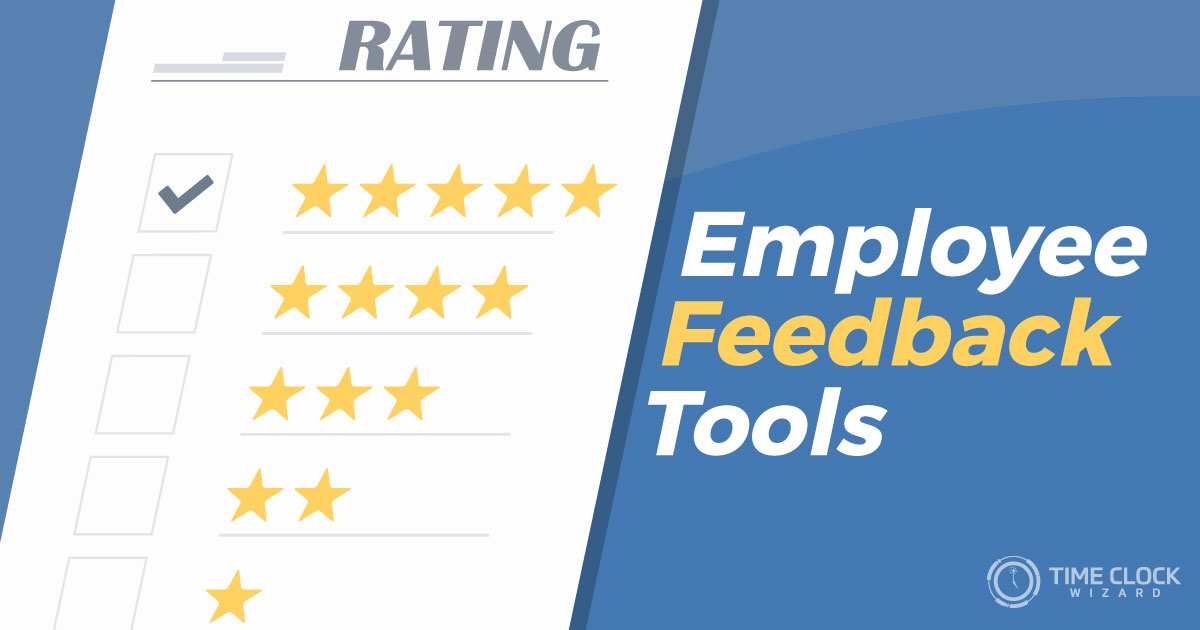
Giving feedback to your employees can seem like a daunting task. By understanding and applying a few simple tips, you will be able to deliver meaningful employee feedback, with confidence in your words. To be an effective manager, you must learn to provide both positive and negative employee feedback. Productive feedback can help you identify and solve problems, with employee productivity soaring.
What Is Meaningful Employee Feedback?
For instance, a slap on the back is nice. So is a spot bonus. And a boss gives someone a shoutout in a general meeting or via email, that can feel great, too. From a managerial point of view, however, those gestures, in and of themselves, are not particularly meaningful.
Yes, these actions celebrate someone’s work—they are examples of positive feedback. But they miss the mark in terms of generating lasting impact. Why? Because they don’t highlight what your star worker achieved, what he or she did that was so admirable and what inspired or impressed.
The Solution
Your staff should be told why they are being lauded. Without specific insight or context, employees on the receiving end of positive feedback will feel good about their work. But they won’t necessarily realize the full extent of what they have done to earn their pat on the back. They may not have realized they have a real skill for problem-solving or a gift for generating punchy, eye-catching copy or an even-keeled personality that is perfect for mentoring a junior member of the team.
Managers who don’t give credit where and when it is due aren’t only short-changing their staff, they are short-changing themselves. Calling out specific talents or achievements is a learning experience that can pay dividends beyond boosting morale. The more a team knows its strengths, the more likely it is to benefit as a unit. An employee who has been feted as a great, nurturing staffer now has a reputation to uphold when the next new hire arrives. Meanwhile, other workers may decide to emulate the lauded staffer, or they made decide to concentrate on another skill and not bother with the new kids on the block. In this scenario, the team is now diversifying, which can strengthen the group.
Don’t Ignore The Elephant In the Room
No aspect of being a manager is more daunting than having an employee who is not meeting the demands of their job. Giving feedback to employees, especially negative feedback, can seem like a overwhelming task. But take heart: a study out of the University of Minnesota found that most employees would rather hear negative feedback about their job performance than hear nothing at all. Remember your mother’s advice to stop teasing your siblings—”If you don’t have anything nice to say, don’t say it”—well, she wasn’t exactly right.
So if you have a problem employee, don’t pretend everything is hunky dory. Underperforming workers are often bad for morale and can frustrate your most committed staffers. You need to address the elephant in the workplace. Before you do that, you need to think things through—thoroughly.
Don’t Accentuate the Negative
Studies have shown that attacking or shaming when giving feedback to employees, is likely to backfire on you and your group. According to the Harvard Business Review, researchers have found that when employees feel they are on the receiving end of harsh criticism from their boss, nearly half of these employees decide to decrease their productivity intentionally. If you are trying to manage and improve your team’s performance, being brutally critical is a dubious strategy. You want to identify an issue or problem so it can be solved. You are trying, in effect, to turn negative into a positive. And that is a message worth getting across.
Use Positive Employee Feedback Phrases
Along with feedback, employees need positive reassurance. When giving feedback to employees, be sure to use powerful reaffirming adjectives like productive, engaging, and determined. Be specific and genuine when using phrases like, “you have exceeded expectations with your determination to learn the role,” rather than “you are doing better than expected, I guess.”
Powerful, positive employee feedback can truly be valuable to your employees through out their careers. Providing positive validation to your employees will definitely yield higher job satisfaction rates.
Have a Goal
Before you provide necessary negative—pro-actively negative—feedback to your staffer, you need to come up with goals for this encounter. What, exactly, do you want to achieve? Defining the problem can help answer that question. Is your employee disengaged or lack motivation? Is there a performance issue that requires training and acquiring new skills? Does he or she not work well with others?
Once you identify and understand the issues, ask yourself what the goal of your feedback is and how you might achieve that goal. Just telling an employee that they are not motivated or don’t communicate well with others won’t solve the problem. You want to be constructive, not destructive.
In some cases, especially when dealing with performance issues, it can be helpful to put together an action plan to propose at the end of your feedback session. But that may be premature. A good first goal is to identify the issues that need to be worked through mutually, so you both have a baseline to move forward from
Here are some steps to make delivering a difficult message less stressful for both of you.
Delivery Is Everything In Employee Feedback
- Find a good time to meet for both of you. And make sure you meet in a private place—humiliating your staffer is one of the worst things you can do. And blind-siding them isn’t great, either. You may want to say: “I’d like to meet with you and give you some constructive feedback. Is now a good time? No? How about tomorrow?”
- Be direct. Explain what the goal of the meeting is. Some managers like to sugar-coat things before delivering hard news. This is known as “the sandwich method” of employee feedback in some circles—bracket the negative with positives. But being honest and constructive is more important than being nice. So lay it on the line, but use a collaborative, non-critical, concerned tone: “I’m concerned that you aren’t meeting performance goals and I want to help you meet them. I wanted to get your thoughts on this and see what I can do to help.”
- You can also be direct and (almost) share the responsibility for a problem, too. This is an even more collaborative approach: “I don’t feel like I’m doing a great job motivating you. You don’t seem that engaged in your work. So I wanted to talk about that.”
- Don’t expect to solve an issue in one session. End the meeting positive note and stress that you are committed to trying to help improve things and you hope your employee feels the same way.
- Document the meeting. Summarize what was discussed and send your employee a copy of your write-up, and schedule a follow-up appointment to discuss next steps.
Common Employee Feedback Examples
The term feedback implies that communication works both ways, and it should. It the risk of shocking any managers reading this, you are not an infallible god. Becoming a leader is a process. Part of that process is listening to your staff and learning from them.
Getting feedback from employees for managers is always more dreadful than giving feedback to employees. Not every employee is invested in helping their manager’s professional development. And who can blame them? Telling your manager that he or she has bad breath, are organizational train wrecks and are terrible communicators is a tough proposition.
There are other ways to invite feedback without putting anyone in the hot seat. One way is to conduct a post-mortem after crucial milestones or projects or dates are reached. They you can ask a group: “What do you think worked and what didn’t?” This kind of informal dynamic is often more fruitful, as nobody is being called out.
Managers should also work with their HR departments to create employee feedback tools that allow anonymous feedback submissions. There are online surveys that guarantee anonymity. Suggestion boxes, anonymous emails, and can also be useful feedback tools. And speaking of HR departments, don’t forget that this department can be instrumental in providing feedback on handling difficult employee issues.
There is also a more casual approach to gaining feedback from employees. There are times when you may bond with your staff—going out for coffee or lunch, or socializing after work. Co-workers have been known to share in the comfort of informal meetings. They may present you with moments of honesty and insight.
Employee Feedback Tools For Remote Team Work
In recent years, employers have added armies of remote workers to their staffs. Communicating and giving feedback to employees who are remote, in a way, can prove to be much harder than talking with employees in your physical workplace. You can’t order lunch for everybody to boost morale during a workload crunch. You can’t take people out for drinks. You can’t single out individuals for praise at a group meeting.
And when there’s a problem that requires constructive feedback, it’s impossible to walk down a hall and invite your remote employee into your office to talk.
But there are things a manager can do. Most remote teams using collaborative platforms to communicate via group chat. And managers can and should use that platform to provide positive feedback to the team. Remote workers are often siloed, not just from a corporation’s home office, but from the other members of a team. So expressing appreciation —yes, cheerleading—is an essential leadership skill. Use it to promote remote teamwork.
Managers have many other tools to amplify positive feedback. Spot bonus—handing out extra cash or gift cards—reward performance. Even awarding a $25 gift card can be a meaningful gesture. It won’t change anyone’s life. But it reinforces the fact that you appreciate an employee’s contribution, and inspire them to continue to excel.
Video conferencing platforms and applications, such as Google Hangouts, Skype, GoToMeeting, and others, allow managers to meet and see remote staffers no matter where they located. Many of these platforms allow group meetings, too. Whether you meet individually with one employee or with a group, these platforms facilitate two-way communication, which is so essential to imparting meaningful feedback.
Remote Team Work Feedback Guidelines
The fact is, most remote workers and their managers communicate through collaborative platforms or via email or even text. These should be options of the last resort in cases where you want to impart constructive feedback to a specific individual that might be perceived as critical feedback. This is because no matter how many smiley emojis you add to a text or email, written communication lacks the nuance and immediacy of talking to someone face to face, or in this case, screen to screen. As with in-the-office encounters, remember to follow these steps:
- Address the elephant in the room
- Don’t accentuate the negative
- Figure out your goals
- Provide meaningful feedback in a non-threatening, positive manner
- Follow up
Avoid The Feedback Loop
With amplified music, feedback—acoustic feedback—happens when, say, the sound from loud guitar feeds into a microphone, which broadcasts into a sound system, which then feeds into the microphone again. When the audio system becomes overloaded with this repeating signal, a painful squeal or screech—a feedback loop—is released.
Giving feedback to employees should not be filled with dissonance. Done in a careful, positive, meaningful manner, it is, ideally, a fruitful, not painful, process.
If you discover your and your staff locked in a loop of negativity, with little progress being made, it may be time to consult your Human Resources department. Don’t worry about “bothering” them. They will appreciate being called.
It’s a safe bet that, like you, they want to improve performances all around.







